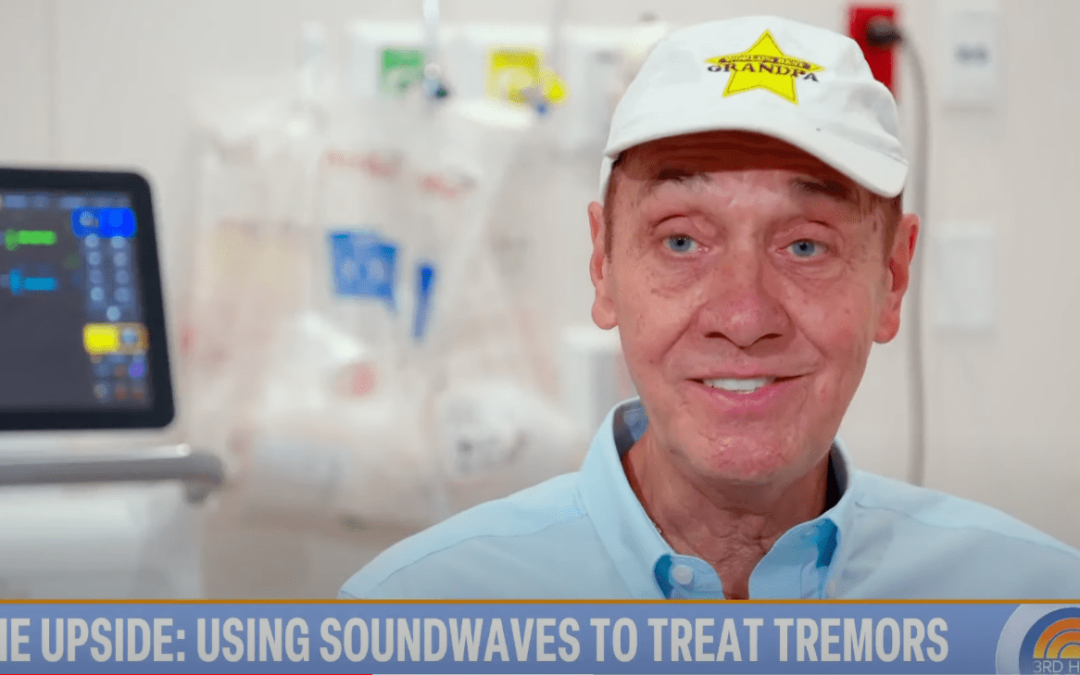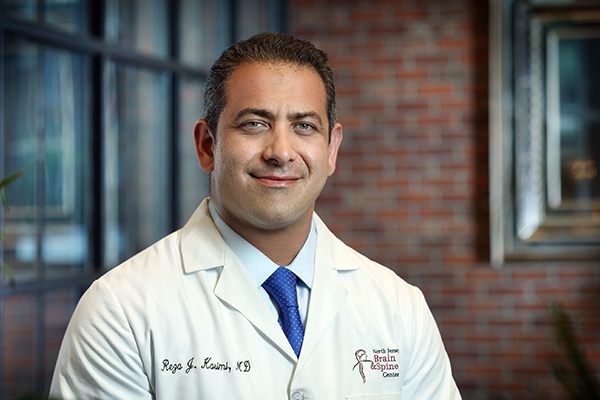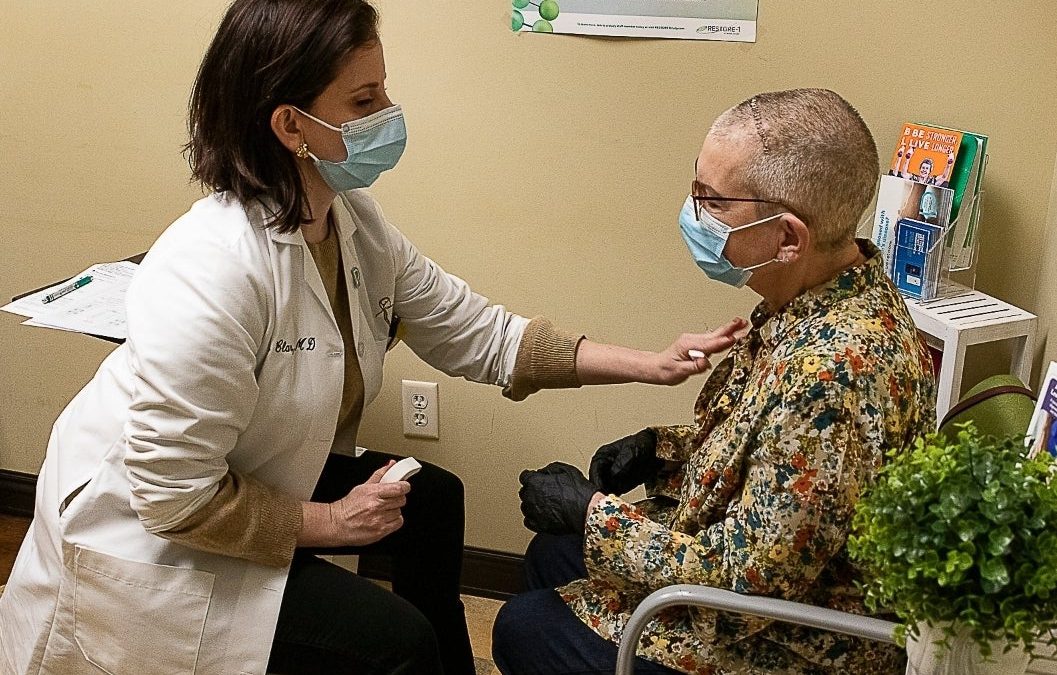Review some of the most commonly asked questions about Gamma Knife Radiosurgery:
- What are arteriovenous malformations?
- What are the symptoms of an AVM?
- How are AVMs diagnosed?
- What are the treatment options for a brain or spine AVM?
- How does Gamma Knife radiosurgery work?
- How are AVM’s treated using Gamma Knife radiosurgery?
- What is Recovering from Gamma Knife radiosurgery for AVMs like?
- Have you or someone you know been diagnosed with an AVM and are considering Gamma Knife radiosurgery?
Gamma Knife Radiosurgery for AVM
Gamma Knife radiosurgery is a non-invasive medical procedure used to treat certain brain conditions, including tumors, vascular malformations—including arteriovenous malformations (AVM),—and other functional disorders. Despite its name, Gamma Knife radiosurgery doesn’t involve a surgical incision, since it’s not considered a traditional form of surgery. Instead, it employs precise beams of gamma radiation to target and treat certain areas of the brain.
Gamma Knife radiosurgery is considered a well-established and effective treatment option for many conditions and offers the advantage of precise targeting and minimal damage to healthy tissues. It also reduces the risk of infection of complications associated with more invasive procedures.
What are arteriovenous malformations?
Arteriovenous malformations (AVMs) are an abnormal tangle of blood vessels with high flow, high pressure blood. Typically, arteries transfer oxygen-rich blood away from the heart and veins return oxygen-depleted blood back to the heart. When an AVM occurs, the usual network of small blood vessels—also known as capillaries—between the arteries and veins is absent, leading to an abnormal and high-flow “connection” between the two.
AVMs also have an abnormal vascular structure since they consist of the complex nest of arteries and veins without the capillaries. As a result, high-pressure arterial blood flows directly into low-pressure veins. AVMs usually are sometimes present at birth but may develop later in life. The exact cause of AVMs is not clear, they are sometimes associated with certain genetic disorders such as hereditary hemorrhagic telangiectasia (HHT).
What are the symptoms of an AVM?
AVMs can occur in any part of the body, they can also occur in the brain or the spinal cord.
Although AVMs can sometimes be asymptomatic, when symptoms do occur, they can include headaches, seizures, and in some cases, neurological deficits. If an AVM were to rupture, patients could experience sudden symptoms of a stroke, including severe headaches, vomiting, paralysis, confusion or loss of consciousness. An AVM rupture usually has severe symptoms and is considered a life-threatening emergency.
How are AVMs diagnosed?
AVMs are often diagnosed with imaging studies such as a brain MRI or CT scan. Specialized tests including CTA (CT angiography) or MRA (magnetic resonance angiography) are often used to diagnose a brain AVM. Most patients will require a formal catheter angiogram for the most detailed and accurate assessment of the AVM.
What are the treatment options for a brain or spine AVM?
Treatment options for brain or spine AVM can include simple observation, watching for any new symptoms while repeating imaging studies on a regular basis. Other AVM treatment options include surgical removal, endovascular embolization or stereotactic radiosurgery. Gamma knife radiosurgery is a form of stereotactic radiosurgery. Many patients will require a combination of treatment options in order to fully cure the AVM. Treatment of an AVM is directed at completely reducing flow in the AVM and eliminating it from the circulation. A fully treated AVM will have no risk of bleeding in the brain.
How does Gamma Knife radiosurgery work?
Gamma Knife radiosurgery uses highly focused beams of radiation that converge on the AVM. This technique delivers a highly focused beam of radiation directly to the AVM and there is minimal exposure of normal brain tissue to the radiation. Unlike traditional surgery, there isn’t a need for an incision. Instead, Gamma Knife radiosurgery is considered non-invasive since the radiation is delivered externally.
Gamma Knife radiosurgery also allows for more precise targeting of radiation beams into the target area without exposure to the surrounding tissue. The precision of Gamma Knife radiation is achieved through precise imaging and sophisticated treatment planning.
The gamma knife treatment takes 1 to 2 hours to perform and patients go home after the procedure. There is minimal if any downtime. Some patients may have transient symptoms for 1 to 2 weeks after gamma knife radiosurgery, however these usually resolve fairly quickly.
How are AVM’s treated using Gamma Knife radiosurgery?
When it comes to treating AVMs, Gamma Knife radiosurgery is one of the most common treatment options. Prior to undergoing Gamma Knife radiosurgery for AVMs, patients undergo a comprehensive evaluation to fully assess the AVM. This often includes MRI and catheter angiography.
During the Gamma Knife procedure, the patient wears a specialized headframe to keep their head stable and in a fixed position. This headframe is placed before the imaging studies and remains in place during treatment. Then, the patient is positioned within the Gamma Knife machine. During the actual gamma knife treatment, the patient is laying on a soft mattress in the gamma knife suite while a precise dose of radiation is delivered to the AVM. Often music is played in order to help relax. The benefit of the Gamma Knife procedure is delivering a high dose of radiation precisely to the AVM while minimizing exposure to nearby healthy tissues.
The Gamma Knife system allows for the delivery of a large dose of radiation to the AVM in a single treatment session. The high precision of the treatment is achieved through the convergence of multiple radiation beams at the target point.
Recovering from Gamma Knife radiosurgery for AVMs
Recovery after gamma knife radiosurgery is fairly rapid with minimal disruption in normal life. Often people take 1 to 2 days off of work for treatment and resume normal life quickly afterward. After Gamma Knife radiosurgery, patients are monitored for any changes in symptoms and to assess the response of the AVM to the treatment. Follow-up imaging studies, such as MRIs or angiograms, are performed to evaluate the status of the AVM. Gamma knife radiosurgery typically takes up to 2 years or longer in order to fully eliminate the AVM. In some cases multiple treatments may be necessary.
The goal of Gamma Knife radiosurgery is to encourage a gradual closure and obliteration of the AVM over time. This process may take months to years, since the blood vessels within the AVM gradually close off and the abnormal connection between arteries and veins is eliminated.
Have you or someone you know been diagnosed with an AVM and are considering Gamma Knife radiosurgery?
For more than 25 years, the experienced physician team at New Jersey Brain and Spine has delivered highly-skilled and compassionate care to more than 40,000 patients with complex brain, spine and neurological conditions. Please contact us today to decide if we are the right option for your care and treatment.
We also offer an expert second opinion service should you wish to discuss your treatment options. For more information, or to request a second opinion, reach out to us immediately by calling 201-342-2550 or emailing us at secondopinion@NJBrainSpine.com
Article updated March, 19 2025.








